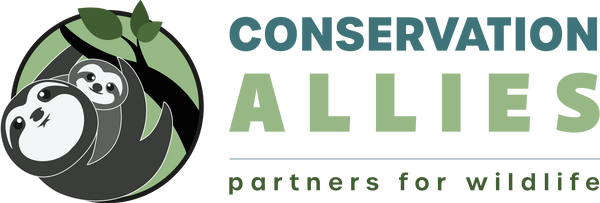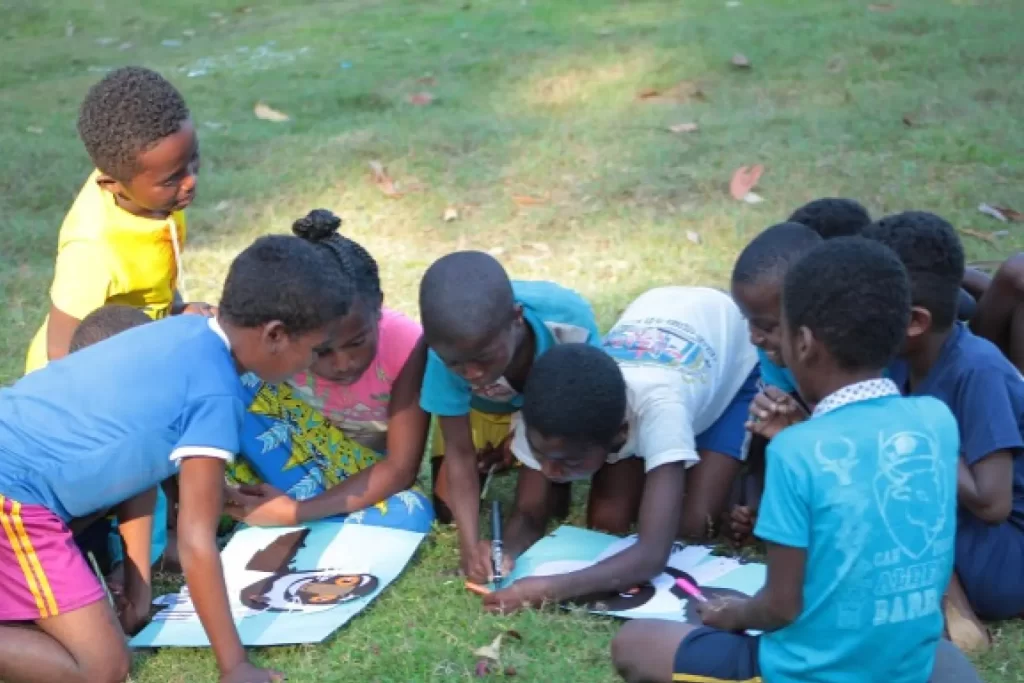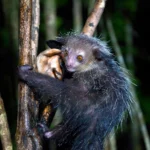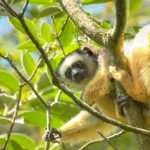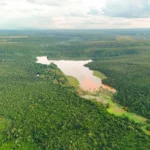AN ASTONISHING THREATS AND PRESSURES MANAGEMENT
2017 to 2021 were great years for GERP because with the support of Houston Zoo, Conservation Allies, all of our donors, and the active participation of local communities with local authorities, anthropogenic pressures in and around the site were very low and were even non-existent.
They Are The Future
Children are the future of humanity. This is why at GERP, we prioritize education and provide financial support for the association of teachers FRAM. Kids are taught and sensitized on the importance of protecting and conserving the environment. We gain so much more while protecting the nature. As materials of Education, we use various tools and strategies. For instance, we lead green classes, create story telling time with the books written by Mrs. Catherine RHIAT, maintain our vegetable gardens, broadcast documentary movie and at the end of each sessions, we ask few comprehension questions. Furthermore, with the help of our funders and supporters, we were able to provide the children with school equipment such as notebooks, pencils and material.
In addition, we are conducting an educational garden. The objective is to give students an overview of the new technique of agriculture in order to strengthen the school canteen set up. With this program, they will be able to share what they learned to their parents and to help them abandon traditional bad habits (Tavy or slash and burn agriculture). With the help of professionals, they learned how to cultivate regardless of the season. They get new knowledge on which type of vegetables to plant when it is rainy season, cold season, etc.
The diversification of agriculture improves the nutritional status of schoolchildren. The daily maintenance of the garden would be like a hobby for children. They also learned composting according to the Berkley technique: 21 days of fermentation using dry plant matter, green plant matter, cattle manure and water. The profits from the production will go back to the children’s canteen or would be sold to supplement school supplies or materials for the children.

Green Is The Answer
“A tree, a child, a patriot. Those who burns the forest, burns the land of the ancestors”, this is the topic chosen during the reforestation campaign of this year. Pupils of the Maromizaha Public Primary School with the sup- port of the teachers, showed the way and participated in the reforestation in order to restore the rich ecosystems once destroyed by deforestation. They were able to plant indigenous and fruit trees for the resources of the population. Therefore, an education session was organized with the nurseryman in order to teach to the kids the importance of reforestation, and most of all the benefits it provide such as: preventing soil erosion caused by rainfall and resources for the population.
300 feet of indigenous species (i.e. Euphorbia pachyclada, Eugenia lokohensis, Dilobea thouarsii) divided into the first second and third categories, and 30 feet of fruit trees were planted (i.e. Moringa oleifera). Planting category I plant species next to other Categories help them to grow safer and better because their provide sun protection through their shade. Category II represents the most numerous plant species in the forest, they have a long lifespan compared to Category I. And Category III represents precious woods, they have a potential longevity but are fewer in the forest.
The Protected Area is a great asset for children and the local population. However, they are not fully aware of the importance of protecting the wildlife within the Natural Reserve. That is why green class is an indispensable opportunity for the students. By showing them in real life how wonderful nature is, they will learn to love it and to protect it. During this activity, 140 students participated supervised by 3 guides and 7 teachers. We worked on the following three topics:
- Topic I Background story of Maromizaha, where does the name Maromizaha come from?
- Topic II: Introduction to ethnobotany / identification of plants: what is meant by forest, stratification, and the origin of species names according to legend
- Topic III: guided tour in the tourist circuits installed in the Protected Area. We provided 150 snacks, bottles of white water, biscuits, bananas, and bread.
Together We Can
Local authorities and partners were fully committed to the governance of the site. That is why raids were led composed of mixed brigade in the forest of Maromizaha. The main purpose is to conduct surveys and manage all the hot spots in and around the site.
The Protected Area steering and monitoring committee chaired by the DREDD Alaotra Mangoro carries out GERP’s Annual Work Plan. That is why, every year we conduct a planning meeting- monitoring and supervision mission in order to monitor the progress of all our conservation projects. Since the creation of the committee in 2016 until today, Maromizaha occupies the “first rank” in the management of protected area at the level of the Alaotra Mangoro region. In addition, this committee is very important because it is the advocacy of the interest of the protected area.
Therefore, the most important actors for conservation are the local population. That is the reason why a local management platform was created in 2016 and is composed entirely of main heads of families, deans of villages, traditional leaders commonly called “Tangalamena”, and GERP’s team. It is a local governance structure where GERP and the local community exchange and balance the benefits generated by various projects. Through this platform, conflicts are settled with traditional rules. This platform emphasize the importance of raising awareness among residents around the site. During these meetings, local representatives participate in decision-making and become spokespersons for the people affected by the projects. The objective is to integrate the local management platform into the management exercise of the Protected Area.
Since 2020, the year of covid-19, GERP has not ceased to update the documents classified as site management tools, including the Site Development and Management Plan (PAG) and the Social Safeguarding Plan (PSS) of the site. GERP involved consultants in the making of these documents. These documents will later be validated at the level of the Ministry of Environment and Sustainable Development, and then used for the next five years in the Management of Maromizaha. We plan to proceed with the validation of these documents this year.
Health Is a Treasure
After the lockdown in 2020, we organized a field trip to see how the health of the riverside community was. On November 12, 2020, a doctor with a community health worker was able to see 92 patients in the Anevoka Maromizaha Basic Health Center. These patients received medications corresponding to their diseases.
Except the case of patients who need to do a CT scan or radiology or ultrasound and / or surgical intervention because we do not have yet appropriate equipment. According to the report, 28 different types of diseases were identified in patients, 11 patients had influenza and 5 coughed due to climate change. 7 were decalcified as people work very hard but the food is insufficient. 8 have suffered from toothache which caused 5 patients to suffer from Epigastralgia. 9 had blood pressure problems (5 hypertension and 4 hypotension). 2 suffered from otitis, 5 have sinusitis. There were no Covid-19 cases in Maromizaha local people.
In 2021:
As a result, we examined 95 patients and doctors were able to diagnose 38 different types of pathologies. 95 patients were from Villages located around the AP Maromizaha and are part of the PAPs. But there were some people who were not part of the PAPs that came to us and were examined by the doctors and benefited form the free medicines. According to the analysis of the results, dental rabies and influenza-like illness have manifested a lot in people. For dental rabies, the problem is that there is no dentist in the nearest commune then people do not know how to take care of their teeth and finally the diets are lacking calcium which leads to this dental pain.For influenza-like illness, climate change makes people living in the bush vulnerable. Their antibody does not actively fight against diseases and especially against covid-19, which easily affects people. There is also the problem of the skin (dermatosis and mycosis). The doctors also intervened in the deworming of the children.
In 2022
180 patients from the 10 villages around Maromizaha were examined, 58 of whom were children under 12 years old. 12 types of diseases were diagnosed in patients. The peculiarity of this consultation is that most children were affected by cough (38) and flu (22). Then, 21 of them had dental rabies. The remaining are common diseases such as fatigue, asthenia, and wounds. All patients received the corresponding medications.
SUPPORTING THE LOCAL DEVELOPMENT
Beekeeping is a flourishing activity and there are currently 18 beneficiaries who are already able to make an average production of 200 to 400 kg of honey per year. The Houston Zoo has helped these beneficiaries for many years especially in providing materials (sailing hat, extractor, purchase of foamed wax, etc.). This sector continues to generate promising income every year.
On the other hand, the agriculture project is a subsistence activity for these natives. The Houston Zoo also supported the 152 beneficiaries farmers of Maromizaha, providing them with inputs (fertilizers, seeds) useful in their season and off-season type crop.
Furthermore, we granted micro-projects for the most vulnerable people. For instance, pig farming, avian breeding, ginger cultivation were already launched in 2016, 2017, 2018, and 2019. This should help households to develop other Income Generating Activities that should alleviate their daily struggle to make a living. Regular monitoring is necessary not only to see the progress of these micro-projects but also to determine their impact on the daily lives of beneficiaries. Follow-ups make it possible to evaluate the progress of projects and to plan corrections or redirect the granting of future projects. Several associations, 17 in number, have obtained funds to redraw their own projects. Another part of the budgets have been allocated for the replenishment of food and vaccines for livestock projects.

The Honey House Rehabilitation
This fund was awarded by the Houston Zoo very recently. Although Maromizaha is located biogeographically in a target area to natural cataclysm, such as cyclones, flooding, abundant rain. Recently, at the beginning of 2022, two cyclones made their passage in Maromizaha, including Cyclone Anna, and Batsirai. The latter impacted the honey factory, the honey extraction center installed in the GERP site. Rehabilitation of both the interior and exterior of the honey extraction center was necessary. This sector is a reliable and sustainable source of income for the local community. Therefore, we could purchase new complete hives, about 130 hives.
For the next five years, the challenge is to to increase the honey making performance. Once production is stable, according to the established forecast, about 1000 kg of honey will be produced. The income generated by these new hives will be used to support the operation of the site and develop micro-projects for vulnerable local groups of people in Maromizaha.
We could provide support the local population and raise their awareness toward environment conservation. But we couldn’t achieve such good results without our donors, funders and partners support.
